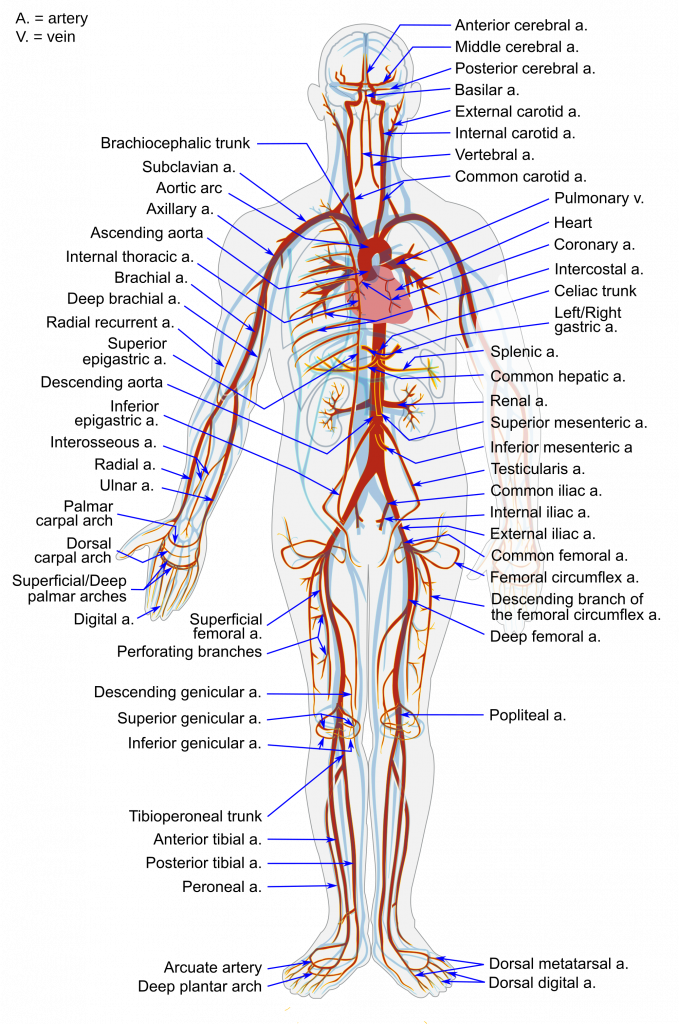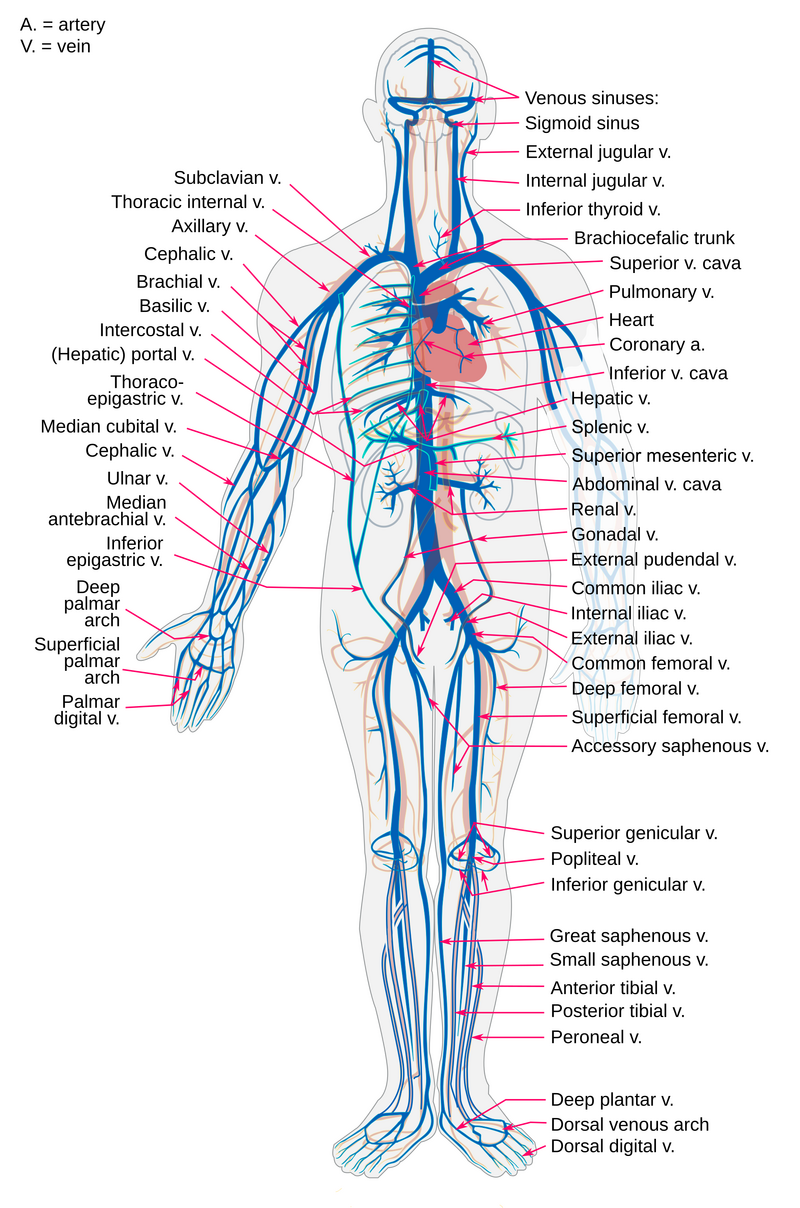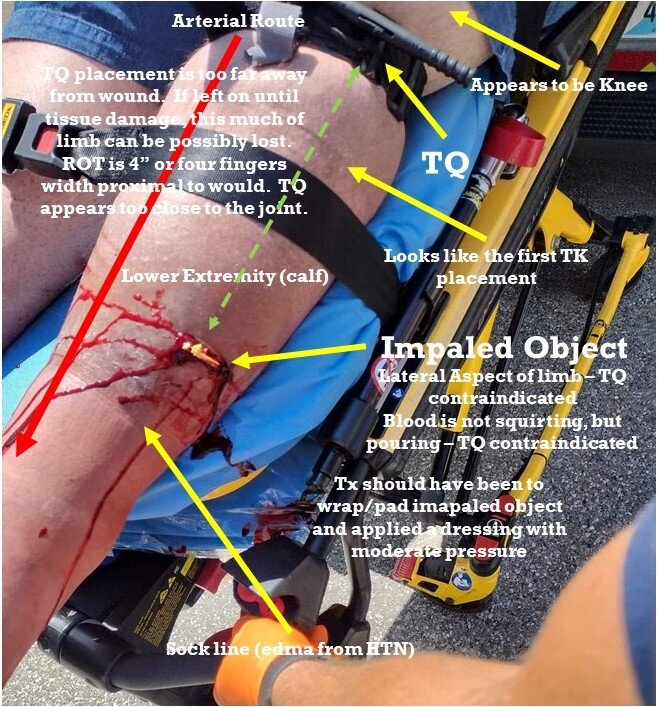DISCLAIMER: This post and similar are for education/discussion. This is not in lieu of treatment or attention by professional medical personnel, nor should it be construed as medical advice.
I'm going to post his here because IDK where else for it to go...maybe training? Maybe Gear? It encompasses training, gear, and survival stuff. I might post various stuff for reference and links and such. I was an IDM in the Army for 14yrs so I know a little about medic-ing.
In commieland, multiple people had aid bags and IFAKs and things for their vehicles and the range and such. At first I though many of these folks were trained but later on I realized not so much. In fact, most not at all.
This one is to go over Tourniquet (TQ) use. The worst thing a human can do medically/first responder in any situation is to render some kind of medical intervention and fuck it up like a football bat. A tourniquet in the hands of an untrained person can be catastrophic.
You need to know the indications for one to be used and how to PROPERLY employ it.
You should also know treatments in lieu of a TK if one isn't indicated.
You need to understand enough A&P (Anatomy and Physiology) and mechanism of injury to help determine the indications (or not) for TQ use. This is high school A&P shit but important for Tx.
ROT: Arteries perfuse tissue (carry oxygenated blood to organs and tissues) under active pumping of the heart. Because of this, they tend to be protected by their placement in the body - core, inside joints (fossae), the interior (medial) aspect of limbs/bones.
Veins do not perfuse tissues. They return deoxygenated blood to the heart to be sent to the lungs for reoxygenation. Only a few Veins are big enough to exsanguinate, but they are easier to address because they move blood from backpressure and not direct pressure from the heart. These tend to clot much easier and faster than arterial blood. Veins also run closer to the surface whereas Arteries run close to the core/bone. 99% of the bleeding you see when you cut yourself is venous.
See pictures: Note, not to be a plagiarist like those fools in commieland, I'll note the source of pics and things so OK Balls has a less chance of a cease and desist order - https://humanbiology.pressbooks.tru.ca/chapter/16-4-blood-vessels/


Now that we have looked at the diagrams and understand where those vessels lie in the human body, what are indications of tourniquet use? Think of Anatomy and MOI...MOI is how the injury was caused. GSW, MVA, fall (impact sickness), farm accident, etc. Is it penetrating trauma or blunt trauma?
The two simplest primary indicators for tourniquet use are bright red exsanguinating bleeding and extremity trauma - think a GSW to the right arm with a fractured humerus. That's the easiest. Bright red squirting/spurting blood in large volume.
Venous bleeding can look really bad, but it's not going to be coming out of the wound bright red, it will pour or flow vs spurting. It will turn red when it's exposed to air...which also people may mistake for arterial
.
A harder one is blunt trauma to say the left calf where it's crushed but not open and actively swelling and turning purple and red...TQ? or Not?
Extreme blunt trauma to the medial aspect of the thigh? TQ or not? MOI? Femur Fx? etc
TQs only go on extremities. Nowhere else. Everything else gets pressure or packing. Look at the below pics from commieland. This is a perfect example of not only improper TQ placement, but it is 100% contraindicated. But dude put it on because he had it and fucked it up. It's too high above the wound, it's not an arterial bleed, and it's not tight enough anyway. Also, he had complained that it kept bleeding...most likely from compartment syndrome cause by applying a TQ to a venous bleed. He's on thinners, so even a venous bleed will look bad. The amount of blood shown is minuscule.

Bottom Line, if you're going to run around with a TQ in your kit, know when, why, and how to use it PROPERLY.
Remember, Exsanguinating Bleeding (arterial squirting bright red) from an Extremity. 4"-6" or Four Fingers above the wound (exceptions can be high thigh wounds depending on location of wound). You don't want it too close or too far away from the wound. Turn windlass enough to stop the Arterial bleeding, not enough to just make dents in your skin. If you or the Pt is fat, it'll look like a fucking balloon animal when it's on correctly, not like the pic. A tourniquet is one of the most painful treatments you can apply. Most times, you cannot apply one correctly to yourself on a leg wound. Arms, yes, leg, especially a thigh, nope. To much squeezing and pain. CAT tourniquets are junk. Only good for women and kids. Use a SOF tourniquet or something with an aluminum windlass or make one out of wood and a cravat.
How many of y'all have TQs in your kits and think you know how to use them or actually have used them?
I'm going to post his here because IDK where else for it to go...maybe training? Maybe Gear? It encompasses training, gear, and survival stuff. I might post various stuff for reference and links and such. I was an IDM in the Army for 14yrs so I know a little about medic-ing.
In commieland, multiple people had aid bags and IFAKs and things for their vehicles and the range and such. At first I though many of these folks were trained but later on I realized not so much. In fact, most not at all.
This one is to go over Tourniquet (TQ) use. The worst thing a human can do medically/first responder in any situation is to render some kind of medical intervention and fuck it up like a football bat. A tourniquet in the hands of an untrained person can be catastrophic.
You need to know the indications for one to be used and how to PROPERLY employ it.
You should also know treatments in lieu of a TK if one isn't indicated.
You need to understand enough A&P (Anatomy and Physiology) and mechanism of injury to help determine the indications (or not) for TQ use. This is high school A&P shit but important for Tx.
ROT: Arteries perfuse tissue (carry oxygenated blood to organs and tissues) under active pumping of the heart. Because of this, they tend to be protected by their placement in the body - core, inside joints (fossae), the interior (medial) aspect of limbs/bones.
Veins do not perfuse tissues. They return deoxygenated blood to the heart to be sent to the lungs for reoxygenation. Only a few Veins are big enough to exsanguinate, but they are easier to address because they move blood from backpressure and not direct pressure from the heart. These tend to clot much easier and faster than arterial blood. Veins also run closer to the surface whereas Arteries run close to the core/bone. 99% of the bleeding you see when you cut yourself is venous.
See pictures: Note, not to be a plagiarist like those fools in commieland, I'll note the source of pics and things so OK Balls has a less chance of a cease and desist order - https://humanbiology.pressbooks.tru.ca/chapter/16-4-blood-vessels/


Now that we have looked at the diagrams and understand where those vessels lie in the human body, what are indications of tourniquet use? Think of Anatomy and MOI...MOI is how the injury was caused. GSW, MVA, fall (impact sickness), farm accident, etc. Is it penetrating trauma or blunt trauma?
The two simplest primary indicators for tourniquet use are bright red exsanguinating bleeding and extremity trauma - think a GSW to the right arm with a fractured humerus. That's the easiest. Bright red squirting/spurting blood in large volume.
Venous bleeding can look really bad, but it's not going to be coming out of the wound bright red, it will pour or flow vs spurting. It will turn red when it's exposed to air...which also people may mistake for arterial
.
A harder one is blunt trauma to say the left calf where it's crushed but not open and actively swelling and turning purple and red...TQ? or Not?
Extreme blunt trauma to the medial aspect of the thigh? TQ or not? MOI? Femur Fx? etc
TQs only go on extremities. Nowhere else. Everything else gets pressure or packing. Look at the below pics from commieland. This is a perfect example of not only improper TQ placement, but it is 100% contraindicated. But dude put it on because he had it and fucked it up. It's too high above the wound, it's not an arterial bleed, and it's not tight enough anyway. Also, he had complained that it kept bleeding...most likely from compartment syndrome cause by applying a TQ to a venous bleed. He's on thinners, so even a venous bleed will look bad. The amount of blood shown is minuscule.

Bottom Line, if you're going to run around with a TQ in your kit, know when, why, and how to use it PROPERLY.
Remember, Exsanguinating Bleeding (arterial squirting bright red) from an Extremity. 4"-6" or Four Fingers above the wound (exceptions can be high thigh wounds depending on location of wound). You don't want it too close or too far away from the wound. Turn windlass enough to stop the Arterial bleeding, not enough to just make dents in your skin. If you or the Pt is fat, it'll look like a fucking balloon animal when it's on correctly, not like the pic. A tourniquet is one of the most painful treatments you can apply. Most times, you cannot apply one correctly to yourself on a leg wound. Arms, yes, leg, especially a thigh, nope. To much squeezing and pain. CAT tourniquets are junk. Only good for women and kids. Use a SOF tourniquet or something with an aluminum windlass or make one out of wood and a cravat.
How many of y'all have TQs in your kits and think you know how to use them or actually have used them?
Last edited:

